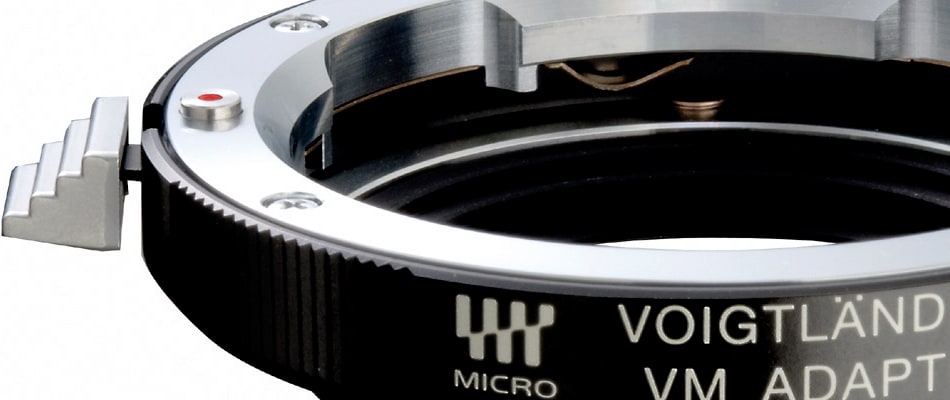Survival of the Fittest: Adapting Old Lenses to New Cameras
Open up a world of lens choices by using an adapter on your mirrorless camera.
 Credit:
Credit:
Products are chosen independently by our editors. Purchases made through our links may earn us a commission.
Mirrorless cameras give photographers tons of flexibility. New lens mount systems like Fujifilm's X-mount, Micro Four Thirds, and Sony's E-mount are growing quickly, offering quality glass for a range of photographic needs. But many people don't know, is that you can actually use way more than just the native lenses for your chosen system. With simple adapters, you can open up a world of lens choices— heck, you might even have some tucked away in your attic or garage already.
Most of these adapters are simple mechanical devices—essentially extension tubes that accept one mount on one end and plug into a different mount on the other. The lens adapter’s primary purpose is to correctly set the distance between your camera's sensor and the rear flange of the lens. This distance, called the flange focal distance, differs from system to system, and if it doesn't match up, the lens you're trying to use won't focus properly—you'll lose the ability to focus on distant objects.
But, before you run off to eBay and start ordering adapters, there are a couple of caveats that you need to understand. Perhaps most important is the issue of sensor size. Depending on what you're trying to accomplish, sensor size can work for you or against you.
Most older lenses were designed to project an image circle large enough to cover good ol' 35mm film. When you mount these lenses on a camera with a sensor smaller than 35mm (which virtually all MILCs have), the the sensor only captures the central portion of the original image circle, reducing the field of view. For instance, the APS-C sensor in a Sony NEX effectively multiplies the advertised focal length of any lens by 150%—often referred to as a “crop factor” of 1.5x. So, if you're adapting a 50mm Canon EF lens to work on a Sony NEX-5R, the lens will have a field of view equivalent to an 75mm lens.
Thanks to some recent photographic innovations, adapting lenses doesn’t necessarily mean straying so far from their native focal lengths. So-called “speed boost” adapters from companies like Metabones increase the maximum aperture of an adapted lens and make the lens wider by 0.71x, compensating for some of the crop. The widening of the image is of great benefit on APS-C sensor cameras, making lenses perform more like they would on a film or full-frame digital camera, with a nearly correct field of view and shallower depth of field.
With small-sensor interchangeable lens systems like the Pentax Q or Nikon's 1-series, a lens adapter typically acts as a teleconverter. Pentax sells an official Q-to-K-mount adapter for its Q cameras which creates a crop factor of 5.5x, effectively turning any lens into a telephoto. For example, a lens like Pentax's FA50 Macro becomes a 275mm macro lens.
The advantage is that you can get a ton of zoom out of a lens that isn't that big—something that appeals to amateur birdwatchers and wildlife photographers. With a full-frame or APS-C DSLR, you'd be carrying some seriously heavy equipment in order to get the same field of view you could get out of a small-sensor ILC and an adapted lens.
Another important thing to remember about lens adapters is that most of them won’t work with autofocus. The overwhelming majority of the adapters out there are dumb metal tubes that were designed only to extend the flange focal distance and convert the lens mount. Few are smart enough to exchange information between the lens and the camera.
There are four exceptions to the statement above. Canon’s EOS M, Nikon’s 1-mount, Micro Four Thirds and Sony’s E-mount systems can be adapted to accept EF, F-mount, Four Thirds, and A-mount lenses, respectively, without a loss of functionality. While that sounds great in theory, the reality of the matter is that autofocus speed tends to be much slower on adapted lenses. It’s better than nothing, but you won’t be capturing sports or other action with any of these adapted lenses.
While most mirrorless camera systems have limited manual focus helpers (like focus magnification) built in, it's becoming more common to see focus peaking as an option. Focus peaking highlights the part of the image that’s in focus. It's the next best thing to focusing through an optical viewfinder on a DSLR (and some have argued that it’s even better in some cases). If you’re buying a mirrorless camera with the intention of adapting other lenses, be on the lookout for peaking—it’ll make accurate focusing way easier.
There are a few other details to keep in mind, depending on what kinds of lenses you’re planning to use on your camera. Many modern lenses (Canon EF, Nikon G, Pentax DA, and Sony A among them) don’t have external aperture rings, so it’s a good idea to shop for an adapter that includes aperture adjustment—otherwise you’ll be stuck shooting wide open all the time. Cheaper adapters might do the trick, but some aren’t as accurate as others in replicating the correct flange focal distance, an issue that can throw off infinity focus. Keep an eye out for adapters with an adjustment screw, enabling fine manual tweaking of the flange focal distance.
As with any third-party device you might attach to your camera, there’s always a slight risk of damage when using an adapter. The accepted wisdom is that first-party adapters and those from reputable manufacturers like Voigtländer, Novoflex, and Fotodiox are preferable to the no-name, bargain bin stuff on Amazon and eBay. Still, a $250 adapter might not be any better, functionally, than a $25 adapter; be sure to read professional and user reviews, and keep an eye out for both defective units and unexpected bargains.
Hero image credit: Voightländer. Photos: Paul Wolfenden, Flickr [CC-BY-3.0]; Novoflex; Metabones; Ken, Flickr [CC-BY-3.0].
